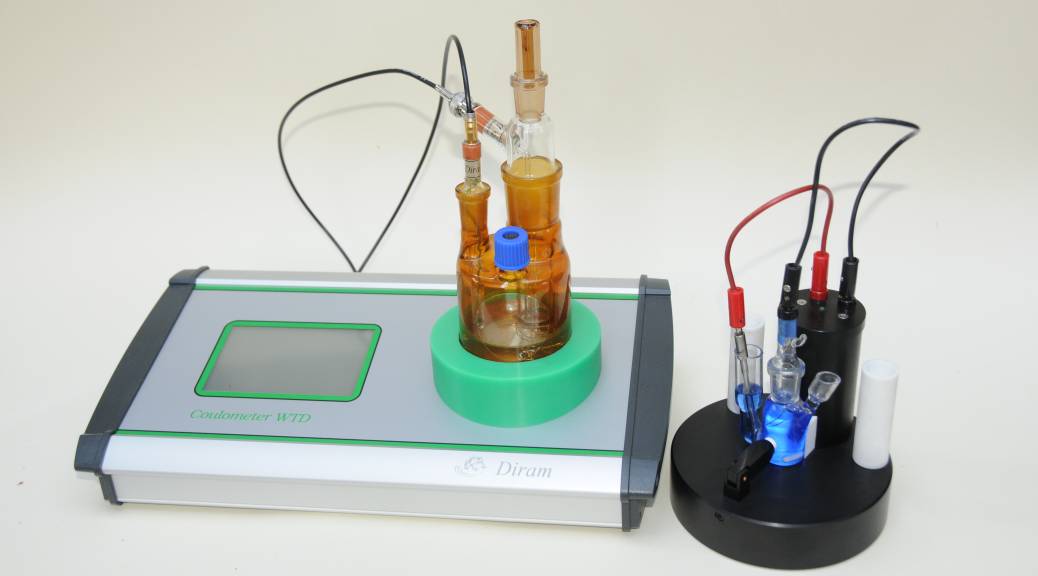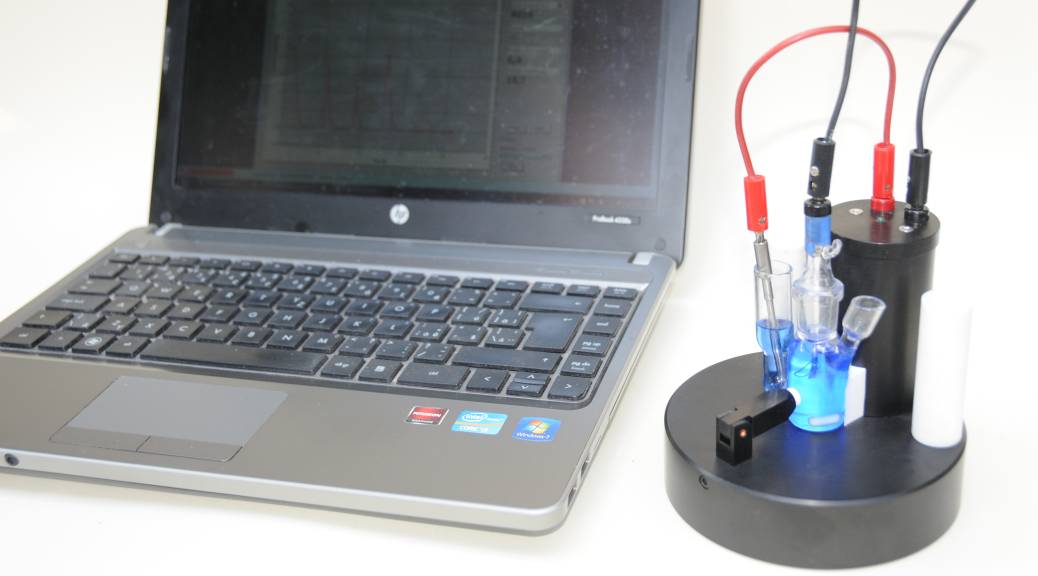Coulometer KOH and Coulometer USB/KOH

Figure 1: The Coulometer WTD and the KOH add-on module; a PC is not required, but does allow for data storage and report printing.

Figure 2: Coulometer USB/KOH is connected to a PC, allowing Diram Measure software to control the instrument, display results and manage storage of data.
Diram s.r.o. offers two possibilities for Acid Number determination – the Coulometer KOH module which is an add-on module for the Coulometer WTD allowing a single process of water & acid number determination; and the Coulometer USB/KOH instrument, which connects directly to a PC and is controlled by Diram Measure software.
Both instruments offer the same level of high-quality results in different packages to suit the particular test environment of the user.
On acid number determination
Acid number by definition is the quantity of potassium hydroxide necessary to neutralise acidic components present in one gram of oil. It has been historically usually determined by a volumetric titration with a potassium hydroxide standard solution, performed in an organic solvent media. When the coulometric approach is employed, the hydroxyl ion titrant is generated directly on the platinum electrode as a result of electrolytic water decomposition.
The neutralisation takes place in the closed cathodic compartment of the glass vessel which excludes possible interferences arising from the atmospheric carbon dioxide. The advantage of the coulometric method lies in minuscule solvent consumption and high accuracy of titrant metering, without the necessity to utilise standardised volumetric solution methods.
The equivalence point is evaluated spectrophotometrically in the presence of a suitable acid-base indicator. This technique significantly reduces problems associated with a subjective end-point determination especially when dark coloured oils are analysed. The solution in the titration vessel is a mixture of alcohol and toluene (1:2) containing a suitable indicator and salt to ensure sufficient conductivity. Finally, directly dividing the resultant micrograms of potassium hydroxide by the sample weight generates the Acid Number.
